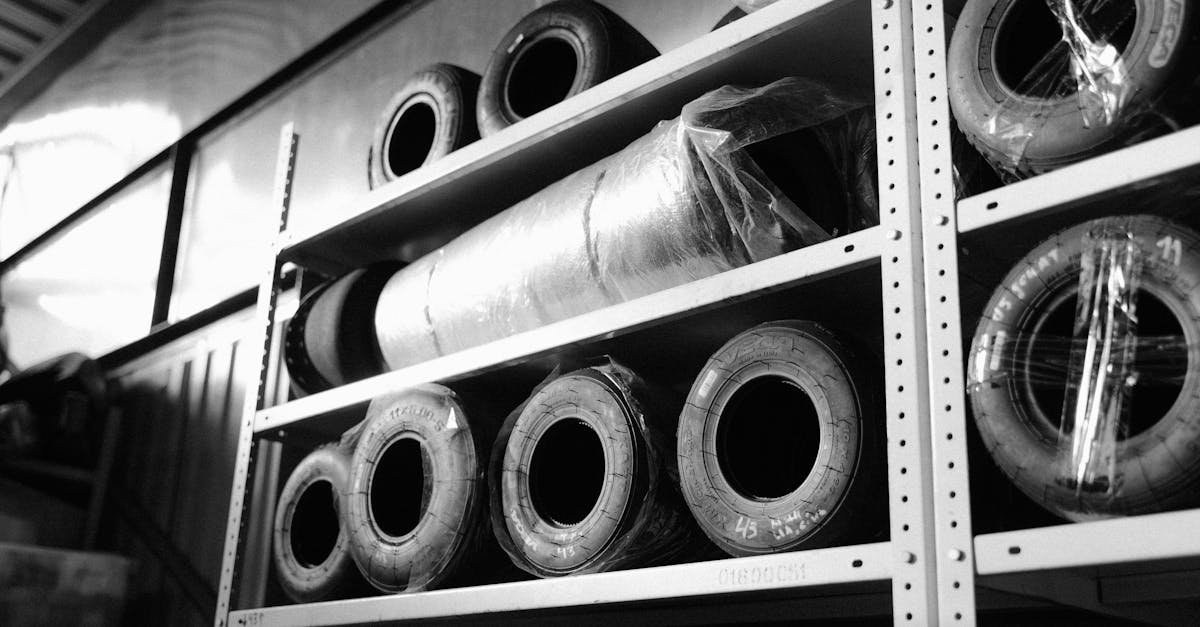Table of Contents
- Spare Tire Types Explained Simply: Your Roadside Lifesaver Guide
- Why Even Bother with a Spare Tire? Isn’t Roadside Assistance Enough?
- Decoding the Spare Tire Lingo: What’s What?
- How to Identify Your Spare Tire Type
- Crucial Considerations for Using ANY Spare Tire
- Maintaining Your Spare Tire for Longevity
- The Future: Are Spare Tires Disappearing?
- Conclusion: Choosing (or Understanding) Your Spare
- FAQs
Spare Tire Types Explained Simply: Your Roadside Lifesaver Guide
Picture this: you’re cruising down the highway, tunes blasting, enjoying the drive, when suddenly… thump, thump, whump. Uh oh. That dreaded feeling sinks in – you’ve got a flat tire. Now what? For many of us, the immediate thought is the spare tire tucked away somewhere in the car. But wait, have you ever actually looked at your spare? Do you know what kind it is, or what its limitations are? Let’s be honest, most of us don’t give that fifth wheel much thought until we absolutely need it.
Getting stranded with a flat is a massive inconvenience, bordering on a nightmare depending on where you are and the time of day. Your spare tire is your immediate ticket out of that sticky situation, a temporary fix to get you back on the road and towards a proper repair shop. But not all spare tires are created equal! Knowing the difference between the various types can save you hassle, keep you safe, and prevent further damage to your vehicle. So, let’s pop the trunk (metaphorically for now) and dive into the world of spare tires, explained simply so you know exactly what you’re dealing with when roadside trouble strikes.
Why Even Bother with a Spare Tire? Isn’t Roadside Assistance Enough?
It’s a fair question in this age of convenient services. Many folks think, “I pay for roadside assistance, why do I need to lug around a spare tire?” And yes, services like AAA or those included with your car insurance or manufacturer warranty are fantastic safety nets. They can tow you, jumpstart your battery, and even change your tire for you.
However, relying solely on roadside assistance has its potential downsides. First, there’s the wait time. Depending on your location (remote highway vs. busy city) and how busy the service is, you could be waiting anywhere from 30 minutes to several hours. That’s a long time to be stuck on the side of the road, potentially in bad weather or an unsafe area. Second, what if you’re in a place with no cell service? You can’t call for help if you can’t get a signal. Third, the roadside assistance technician still needs a usable spare tire to put on your car unless they plan to tow you (which means even more time and hassle getting to a shop). If your spare is flat or damaged, they might not be able to help you on the spot.
Think of your spare tire as your first line of defense. It empowers you to get moving again quickly, even if it’s just to a safer location or the nearest service station. Roadside assistance is an excellent backup, but having a functional spare gives you immediate options and a greater sense of control in a stressful situation. It’s about self reliance when you need it most.
Decoding the Spare Tire Lingo: What’s What?
Okay, so you’re convinced a spare is useful. But when you look in your trunk (or under your car, or mounted on the back), what exactly are you seeing? Let’s break down the common types:
Full Size Matching Spare Tire
This is the unicorn, the gold standard of spare tires. As the name suggests, it’s an identical match to the four tires already on your vehicle – same size, same brand, same model, often even the same wheel.
Pros: The Ideal Scenario
The biggest advantage? Once you put it on, you can essentially forget it’s a spare (at least temporarily). There are typically no significant speed or distance restrictions beyond what’s normal for your regular tires. It won’t drastically affect your car’s handling, braking, or systems like ABS and traction control because it’s designed to work seamlessly with the others. You can drive on it like a normal tire until you get your original tire repaired or replaced. It’s the least disruptive option after a flat.
Cons: Space and Weight Considerations
So, why doesn’t every car come with one? Simple: size and weight. A full size matching spare takes up a lot of valuable trunk space or requires complex under vehicle mounting. It also adds significant weight, which can negatively impact fuel economy and even vehicle dynamics slightly. Manufacturers are always looking to save space and weight, making these increasingly rare, often found only on larger SUVs and trucks where space is less of a premium.
Full Size Non Matching Spare Tire
This one looks like a regular tire, and it is… mostly. It’s the same physical size (diameter and width) as your regular tires, but it might be a different brand, model, or have a different tread pattern. It often comes on a basic steel wheel instead of the fancier alloy wheel your car might have.
What’s the Difference?
The key difference lies in the specifics. While the overall dimensions match, the construction, tread design, and speed rating might differ from your primary tires. The wheel itself is often heavier and less aesthetically pleasing (usually plain black or gray steel). It’s designed to be functional, not fashionable.
Benefits and Drawbacks
The main benefit is that it’s still a full size tire, offering better stability and performance than a temporary spare. You generally won’t face the super restrictive speed and distance limits of a “donut.” However, because it doesn’t perfectly match the other tires, it can still subtly affect handling, braking balance, and potentially confuse systems like traction control or all wheel drive (AWD). You shouldn’t keep it on indefinitely. Think of it as a much better temporary solution than a tiny donut, but still something you need to address relatively quickly by getting your original tire fixed. It also shares the space and weight disadvantages of the matching full size spare.
Temporary Full Size Spare Tire
This category sometimes overlaps with the non matching full size spare, but often implies a tire that’s full size but constructed more lightly than your standard tires. It might look very similar to your regular tires but could have shallower tread depth or different internal construction to save weight and cost.
A Lighter Alternative
Manufacturers might use this type to provide the driving stability benefits of a full size spare while shaving off some pounds compared to a truly identical matching spare. It’s a compromise aiming for better performance than a donut without the full weight penalty of a standard tire and wheel combo.
Limitations to Keep in Mind
Because it’s built lighter, it may still come with some limitations, though usually less severe than a compact temporary spare. Always check the tire’s sidewall or your owner’s manual! There might be a maximum recommended speed (often higher than a donut’s, but perhaps not full highway speed) and a suggestion to replace it sooner rather than later. It’s still considered a temporary fix.
Compact Temporary Spare Tire (The “Donut”)
Ah, the infamous “donut.” This is what most people picture when they think of a spare tire, and it’s the most common type found in modern cars. These are significantly smaller and narrower than your regular tires, often looking comically skinny when mounted.
The Most Common Sight
Why are they so prevalent? Space and weight savings are the primary drivers. Donuts take up minimal trunk space, allowing for deeper cargo wells or room for other components like hybrid batteries. They are also much lighter than full size spares, contributing to better fuel efficiency – a key goal for automakers.
Why the Restrictions? (Speed/Distance)
This is crucial! Donuts are strictly temporary and come with significant limitations, usually printed right on the tire’s sidewall or a bright sticker on the wheel. Typically, you’ll see restrictions like:
- Maximum Speed: Often limited to 50 mph (80 km/h) or sometimes even less. Exceeding this is dangerous!
- Maximum Distance: Usually limited to around 50 70 miles (80 110 km). Just enough to get you safely to a tire shop.
These limits exist because the donut’s smaller size, different construction, and higher inflation pressure (check it!) mean it handles very differently from your regular tires. It affects braking, cornering stability, and can put extra strain on your differential, especially on drive axles or in AWD vehicles. It also won’t have the same grip, especially in wet or snowy conditions.
Pros and Cons Balanced
Pros: Saves space, saves weight, lower cost for manufacturers. Gets you off the side of the road.
Cons: Severe speed and distance limits, compromised handling and braking, looks silly, must be replaced ASAP, requires higher inflation pressure.
Folding Temporary Spare Tire
This is a less common, slightly more exotic variant of the temporary spare. When stored, it’s deflated and collapses or folds into a remarkably compact package, saving even more space than a regular donut.
The Space Saver Supreme?
Indeed, its main selling point is minimizing the space required for storage. This might be found in sports cars or vehicles with very limited trunk space where even a donut is too bulky.
Inflation Required: The Catch
The big catch? You can’t just slap it on. Before you can use a folding spare, you need to inflate it, usually with a portable air compressor or inflation canister that comes with the vehicle (make sure that’s present and working too!). This adds an extra step to the tire changing process, which can be stressful on the side of the road. Once inflated, it generally functions like a compact temporary spare (donut) with similar speed and distance restrictions.
What About Run Flat Tires? Are They Spares?
Run flat tires are a different beast altogether. They aren’t spare tires themselves, but rather a type of primary tire designed to operate for a limited time even after losing all air pressure. They have reinforced sidewalls that can support the vehicle’s weight temporarily.
Cars equipped with run flat tires often don’t come with a spare tire at all (or a jack, or a lug wrench!). The idea is that if you get a puncture, you can continue driving (again, with speed and distance limitations, typically around 50 mph for 50 miles) directly to a service center without needing to change the tire on the roadside. While convenient, run flats tend to be more expensive, offer a harsher ride, can be harder to find replacements for, and often cannot be repaired after being driven on flat, requiring mandatory replacement. So, they eliminate the need for a spare but come with their own set of trade offs.
How to Identify Your Spare Tire Type
Not sure which type you have? Time for a little investigation!
- Check Your Owner’s Manual: This is the best place to start. Your car’s manual should explicitly state the type of spare tire supplied and its specific limitations.
- Visual Inspection: Pop the trunk or look where your spare is stored.
- Does it look identical to your other tires and wheels? (Full Size Matching)
- Does it look like a normal tire size but on a plain steel wheel or clearly a different tire model? (Full Size Non Matching or Temporary Full Size)
- Is it obviously much thinner and smaller in diameter than your regular tires? (Compact Temporary / “Donut”)
- Is it deflated and stored with an inflator kit? (Folding Temporary)
- Is there no spare tire at all, but your tires have markings like RFT, ZP, or EMT? (Run Flat Tires likely equipped)
- Read the Sidewall: Temporary spares (donuts and folding types) usually have prominent warnings printed directly on the sidewall stating “TEMPORARY USE ONLY” along with the maximum speed and sometimes distance restrictions. Full size spares typically won’t have these specific temporary use warnings.
Knowing is half the battle, right? Identifying your spare prepares you for what to expect if you ever need to use it.
Crucial Considerations for Using ANY Spare Tire
Okay, you’ve identified your spare. If the unfortunate happens and you need to use it, keep these vital points in mind, regardless of the type:
Check the Pressure Regularly! (Yes, Even the Spare)
This is SO important and so often overlooked! Your spare tire, just like your regular tires, loses air pressure over time. Imagine getting a flat, going through the effort of changing it, only to find your spare is flat too! Nightmare scenario. Check your spare tire’s pressure at least once every few months and before any long road trips. Temporary spares (donuts) often require much higher pressure than regular tires (sometimes 60 psi!), so check the sidewall or your owner’s manual for the correct specification. Don’t just assume it’s the same as your main tires.
Understand Speed and Distance Limits
We’ve touched on this, but it bears repeating, especially for temporary spares (donuts, folding, sometimes temporary full size). These limits are there for your safety. Exceeding them drastically increases the risk of tire failure (a blowout on a spare is extra bad news) and loss of vehicle control. Driving too fast or too far on a temporary spare can also damage your car’s differential or drivetrain components due to the difference in rotation speeds. Heed the warnings!
Impact on Vehicle Handling and Systems (ABS, Traction Control)
Any spare tire that isn’t a perfect match to your others will change how your car feels and performs.
- Handling: Expect reduced grip, especially with donuts. Cornering, especially at speed, will feel different. Drive more cautiously.
- Braking: Stopping distances may increase. The smaller contact patch of a donut provides less braking force. Brake earlier and more gently.
- ABS and Traction Control: These systems rely on wheel speed sensors. A significantly different sized spare can confuse these systems, potentially causing them to activate unexpectedly or not function optimally. Some manufacturers even recommend disabling traction/stability control when using a compact spare (check your manual!).
- AWD Systems: Using a mismatched spare (especially a donut) on an All Wheel Drive vehicle can be particularly problematic, potentially causing binding and damage to the complex (and expensive!) AWD system components. Some AWD vehicles have very specific instructions or may even prohibit the use of certain spares on drive axles. Again, your owner’s manual is your best friend here.
Basically, when driving on any spare (unless it’s a full size matching one), drive defensively. Reduce speed, increase following distance, avoid sudden maneuvers, and make getting your primary tire repaired or replaced your top priority.
Maintaining Your Spare Tire for Longevity
Your spare tire might sit unused for years, but it still needs a little TLC to be ready when called upon.
- Pressure Checks: We mentioned it before, but it’s the most critical maintenance. Check it every few months and before long trips. Use a reliable pressure gauge.
- Visual Inspection: When you check the pressure, give the tire a quick look over. Check for any visible cracks, cuts, bulges, or signs of aging in the sidewall or tread. Rubber degrades over time, even when not in use.
- Age Matters: Tires have a lifespan, typically recommended to be replaced after 6 10 years, regardless of tread wear. This includes your spare! An old, brittle spare might fail when you need it most. Check the tire’s DOT code to find its manufacture date.
- Keep it Clean: Occasionally cleaning the spare and its storage area can prevent dirt buildup that might hinder removal or installation.
- Check Mounting Hardware: Ensure the mechanism holding the spare (bolt, winch, etc.) is in good working order and not seized or rusted.
A few minutes of preventative maintenance can save you major headaches down the road.
The Future: Are Spare Tires Disappearing?
It certainly seems that way sometimes. As mentioned, manufacturers are keen to save weight and space for fuel economy gains and to accommodate new technologies like batteries in electric and hybrid vehicles. The rise of run flat tires and the inclusion of tire inflator kits (sealant and a compressor) instead of spares are clear trends.
These inflator kits work by injecting a sealant into the punctured tire and then reinflating it with the compressor. They can be effective for small, simple punctures in the tread area. However, they are useless for larger holes, sidewall damage, or blowouts. Additionally, the sealant can sometimes make a proper tire repair more difficult or even impossible, and it often messes up the Tire Pressure Monitoring System (TPMS) sensor inside the wheel.
While spare tires might be becoming less common as standard equipment, especially on smaller cars and EVs, they are unlikely to disappear completely, particularly on trucks and larger SUVs designed for more rugged use or towing. Many drivers still prefer the peace of mind that a physical spare provides over sealant kits or run flats. For now, understanding the type of spare (or lack thereof) your vehicle has is key.
Conclusion: Choosing (or Understanding) Your Spare
So there you have it – the world of spare tires, hopefully demystified! From the ideal but bulky full size matching spare to the space saving but limited donut, each type serves a purpose and comes with its own set of rules. Knowing what kind of spare your car carries, its limitations (especially speed and distance), and the importance of regular pressure checks is absolutely vital for safe and effective use.
A flat tire is never fun, but being prepared can turn a potential disaster into a manageable inconvenience. Your spare tire is a crucial piece of safety equipment. Treat it well, understand how to use it correctly, and it will be there to rescue you when you need it most. Don’t wait until you’re stranded on a dark, rainy night to figure out what that thing in your trunk actually is. Check it today, check the pressure, and drive with a little more confidence knowing you’re prepared!
FAQs
1. Can I use a donut spare tire on the front wheels?
It’s generally recommended not to, especially on a front wheel drive car, as the front wheels handle steering and most of the braking forces. The significant size difference of a donut can severely impact steering control and braking balance. If you get a flat on the front and have a donut spare, the safest (though more laborious) method is often to move a full size rear tire to the front and put the donut on the rear axle.
2. How long does a spare tire last if I never use it?
Even unused, tires age. Rubber degrades over time due to exposure to oxygen, temperature fluctuations, and ozone. Most experts recommend replacing tires (including the spare) every 6 to 10 years, regardless of tread depth. Check the 4 digit DOT code on the sidewall – the last two digits indicate the year of manufacture (e.g., ‘2521’ means the 25th week of 2021).
3. Do I need to worry about TPMS (Tire Pressure Monitoring System) with my spare?
Most spare tires (especially temporary donuts) do not have a TPMS sensor installed. When you install the spare, your TPMS warning light will likely illuminate on the dashboard because the system can no longer detect the sensor from the original wheel. This is normal. The light should go off once the original wheel with its sensor is repaired and reinstalled.
4. Can I buy a different type of spare tire for my car?
Technically, yes, but you need to be careful. If you want to upgrade from a donut to a full size spare, you must ensure it fits in the designated storage space and that the bolt pattern and offset are correct for your vehicle. Adding a heavier full size spare will also slightly impact fuel economy and potentially require different mounting hardware. It’s best to consult with a tire professional.
5. If my car came with a tire inflator kit instead of a spare, can I still buy a spare?
Often, yes. Many cars that come standard with inflator kits still have the physical space (like a well in the trunk) where a spare tire could potentially fit, as the body shell might be used for multiple trim levels or markets. You’d need to purchase the correct size spare tire, wheel, jack, and lug wrench. Check forums specific to your car model or consult your dealer to see if a spare tire kit is available or feasible.









